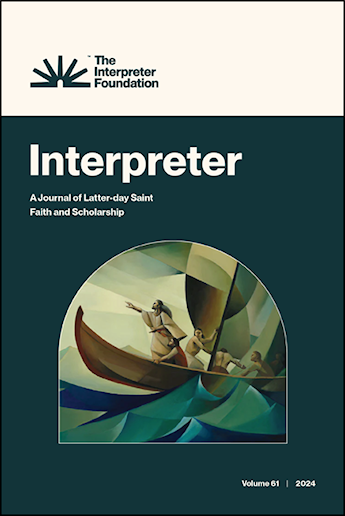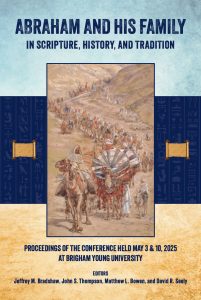[Page 65]Review of Terryl L. Givens, Wrestling the Angel: The Foundations of Mormon Thought: Cosmos, God, Humanity (Oxford, UK: Oxford University Press, 2014). 424 pp.
Abstract: Terryl Givens’ masterful work Wrestling the Angel takes on the daunting task of examining the history of Christian belief while also examining the worldly philosophies which shaped its scriptural interpretation. As in the biblical story of Jacob’s struggle with the angel, we all must forge our own testimonies while confronting a secular world including godless philosophies. Sometimes testimony wins, and tragically sometimes the world wins and a testimony is lost. In dealing with this intellectual “matter unorganized,” interpretation of the secular philosophy becomes the key. With the right interpretation, philosophies deemed “secular” or “godless” can be seen as helpful and even providentially provided by the Lord to help provide a philosophical grounding for a testimony instead of destroying it. Aspects of the philosophy of Immanuel Kant can be seen as laying a groundwork for much of contemporary American philosophy, Continental philosophy, and a possible basis for interpretations of these philosophies, which help rather than hinder the spread of the gospel. Kant’s concept of the synthetic a priori, for example, can help us understand how humans organize our individual ideas about reality from “matter unorganized,” perhaps in a way similar to how our “human” God organizes our world. Kant’s philosophy had vast influences, arguably resulting in a new way to see the relationship between God and mankind, which is compatible with the gospel. Finally I examine Givens’ view of humanism and how it can be interpreted as helpful rather than hindering the gospel. Continue reading



 Welcome to Interpreter: A Journal of Latter-day Saint Faith and Scholarship, the peer-reviewed journal of The Interpreter Foundation, a nonprofit, independent, educational organization focused on the scriptures of The Church of Jesus Christ of Latter-day Saints. Non-print versions of our journal are available free of charge, with our goal to increase understanding of scripture. Our latest papers can be found below.
Welcome to Interpreter: A Journal of Latter-day Saint Faith and Scholarship, the peer-reviewed journal of The Interpreter Foundation, a nonprofit, independent, educational organization focused on the scriptures of The Church of Jesus Christ of Latter-day Saints. Non-print versions of our journal are available free of charge, with our goal to increase understanding of scripture. Our latest papers can be found below. 
 Conference Proceedings are now available
Conference Proceedings are now available